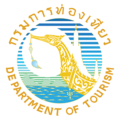Best Time to Visit Phang Nga: Weather, Crowds, and Seasonal Highlights

Phang Nga province experiences distinct seasonal variations that significantly impact travel conditions, activity availability, pricing, and overall visitor experience. Understanding these patterns enables informed decision-making for trip timing based on individual priorities including weather preferences, budget considerations, crowd tolerance, and specific activity interests.
Climate Overview and Seasonal Patterns
Tropical Monsoon Climate Characteristics
Phang Nga’s location on Thailand’s Andaman Sea coast subjects the region to tropical monsoon climate patterns with three distinct seasons. Temperature variations remain relatively modest throughout the year, ranging from 24°C to 32°C, while rainfall and humidity levels show dramatic seasonal differences.
The region experiences two primary monsoon systems: the northeast monsoon bringing dry conditions from November through March, and the southwest monsoon creating wet conditions from May through October. April represents a transitional period with variable conditions.
Humidity levels fluctuate significantly between seasons, ranging from 60-70% during dry periods to 80-90% during monsoon seasons. These variations affect comfort levels and activity suitability throughout the year.
Geographic Variations Within the Province
Coastal areas experience more moderate temperature variations and higher humidity levels compared to inland mountainous regions. Khao Sok National Park and interior areas show greater temperature ranges and different precipitation patterns.
Elevation effects become noticeable in mountainous areas where temperatures drop 2-3°C per 300 meters of elevation gain. These variations affect activity comfort and clothing requirements for different destinations within the province.
Microclimates around limestone formations and protected bays create localized weather variations that can differ from regional forecasts. These conditions particularly affect marine activities and cave exploration timing.
High Season Analysis (November – March)
Weather Conditions and Advantages
The northeast monsoon period provides optimal weather conditions with minimal rainfall, moderate humidity levels, and consistent temperatures. Average rainfall drops to less than 100mm per month, with many days experiencing no precipitation.
Wind patterns during this period feature gentle breezes of 10-15 km/h, creating ideal conditions for boat transportation and water activities. Sea conditions remain calm with wave heights typically under 0.5 meters in protected areas.
Temperature ranges from 25°C to 30°C provide comfortable conditions for outdoor activities without excessive heat stress. Lower humidity levels enhance comfort during physical activities and reduce heat-related fatigue.
Sunrise occurs between 6:15-6:45 AM while sunset timing ranges from 6:00-6:30 PM, providing consistent daylight hours for activity planning. Cloud cover remains minimal, ensuring reliable weather for photography and sightseeing.
Tourist Volume and Infrastructure Impact
Peak tourist season coincides with optimal weather conditions, resulting in maximum visitor numbers and crowded attractions. Popular destinations like James Bond Island may host 500+ daily visitors during peak periods.
Accommodation availability decreases significantly during high season, with premium properties booking out 2-3 months in advance. Budget accommodation options become limited and prices increase 50-100% above low season rates.
Transportation services operate at maximum capacity with ferry services fully booked and private charter availability limited. Advanced booking becomes essential for preferred departure times and route options.
Restaurant and service capacity reaches maximum levels, resulting in longer wait times and reduced service quality at popular dining establishments. Reservation requirements increase for quality dining experiences.
Pricing Structure During Peak Season
Accommodation rates reach annual maximums during November-March period, with luxury resorts charging 2-3 times low season rates. Mid-range properties typically increase rates 50-75% above off-season pricing.
Tour operator pricing reflects peak demand with standard tours costing 25-50% more than low season rates. Private charter costs increase due to limited availability and higher demand levels.
Flight costs to nearby airports (Phuket, Krabi) reach annual peaks during this period, particularly around Western holiday periods. International flight prices may increase 100-200% above low season rates.
Restaurant and service pricing generally remains stable, though some establishments implement peak season surcharges of 10-20% during the busiest months.
Monthly Breakdown: November Through March
November: Transitional month with decreasing rainfall and rising tourist numbers. Weather becomes increasingly reliable while accommodation availability remains good with moderate pricing.
December: Peak weather conditions with minimal rainfall and optimal temperatures. Tourist numbers reach maximum levels with corresponding impacts on pricing and availability.
January: Continued excellent weather with peak crowding at attractions. Accommodation and tour booking requires advance planning due to high demand levels.
February: Optimal weather continues with slightly reduced tourist numbers compared to December-January. Pricing remains at peak levels but availability improves marginally.
March: Excellent weather conditions continue with gradually increasing temperatures. Tourist numbers begin declining toward month-end as weather remains favorable.
Shoulder Season Considerations (April and October-November)
April Weather Characteristics
April represents the hottest period of the year with average temperatures reaching 28-35°C and humidity levels increasing to 75-85%. Rainfall begins increasing toward month-end as monsoon season approaches.
Afternoon thunderstorms become common during late April, typically occurring between 2-5 PM with brief but intense precipitation. These storms often provide temporary cooling but increase humidity levels.
Wind patterns become variable during April with occasional strong gusts preceding thunderstorms. Sea conditions remain generally favorable for morning activities while afternoon conditions may deteriorate.
Heat stress considerations become important for outdoor activities, requiring schedule modifications to avoid peak temperature periods during 11 AM-3 PM timeframes.
October-November Transition Period
October marks the end of monsoon season with gradually decreasing rainfall and improving weather reliability. Early October may still experience significant precipitation while late October shows marked improvement.
Weather predictability increases throughout October-November transition, enabling more reliable activity planning. However, sudden weather changes remain possible during this transitional period.
Tourist numbers remain relatively low during October, creating opportunities for authentic experiences and better pricing. November shows rapid increases in visitor numbers as weather reliability improves.
Accommodation and tour availability remains good during October with low season pricing often extending through mid-November. Advance booking becomes advisable for late November visits.
Low Season Analysis (May – September)
Monsoon Season Weather Patterns
The southwest monsoon brings significant rainfall from May through September, with monthly precipitation often exceeding 300mm. Rainfall patterns typically feature afternoon and evening storms rather than continuous precipitation.
Despite high rainfall totals, many days include substantial periods without rain, particularly during morning hours. Weather timing often allows modified activity schedules accommodating precipitation patterns.
Humidity levels reach annual maximums of 85-95%, creating challenging conditions for strenuous outdoor activities. Heat index values may exceed actual temperatures by 5-10°C due to humidity effects.
Storm intensity can be significant with heavy downpours, lightning activity, and strong winds. Severe weather events occasionally disrupt transportation and outdoor activities for 1-2 day periods.
Advantages of Low Season Travel
Tourist numbers drop 60-80% compared to peak season, creating opportunities for authentic cultural experiences and uncrowded attractions. Popular destinations that host hundreds of daily visitors during peak season may see fewer than 50 visitors during low season.
Pricing reaches annual minimums across all sectors including accommodation, tours, and transportation. Accommodation rates may be 40-70% below peak season pricing with frequent promotional offers.
Local interaction opportunities increase significantly due to reduced tourist presence and more relaxed pace. Community engagement becomes more authentic without competition from large tourist groups.
Photography opportunities improve due to dramatic storm lighting, lush vegetation, and empty attractions. Weather-related imagery can be spectacular for photographers comfortable with challenging conditions.
Challenges and Limitations
Transportation reliability decreases during monsoon season with ferry cancellations and road flooding affecting access to certain areas. Flexibility becomes essential for travel planning during this period.
Outdoor activity availability reduces due to safety considerations during storms and rough sea conditions. Cave exploration and boat tours may be cancelled or modified based on weather conditions.
Equipment and clothing considerations become more complex requiring rain protection, quick-dry materials, and backup plans for extended periods indoors.
Health considerations include increased mosquito populations, higher humidity effects, and potential exposure to waterborne illnesses during flooding periods.
Monthly Low Season Breakdown
May: Early monsoon onset with increasing rainfall and rising humidity. Tourist numbers decline rapidly while weather reliability decreases compared to April.
June-July: Peak monsoon conditions with maximum rainfall and humidity levels. Tourist numbers reach annual minimums while accommodation and tour pricing hits bottom levels.
August: Continued heavy rainfall with potential for severe weather events. Infrastructure stress from prolonged wet conditions may affect service quality and availability.
September: Late monsoon period with continued significant rainfall but occasional improved weather windows. Tourist numbers remain low while prices stay at minimum levels.
Activity-Specific Timing Recommendations
Marine and Water Activities
Sea kayaking conditions remain optimal during November-March period with calm seas, clear visibility, and minimal weather disruption. Cave exploration becomes particularly rewarding with reliable access timing and optimal lighting conditions.
Snorkeling and diving activities benefit from peak season conditions with 15-20 meter visibility and calm sea states. Marine life activity increases during cooler months with better feeding conditions.
Boat transportation operates most reliably during dry season with minimal cancellations and comfortable conditions. Speedboat and longtail boat tours provide optimal experiences during November-March timeframe.
Swimming and beach activities remain comfortable year-round due to consistent water temperatures of 26-28°C. However, beach access and comfort levels vary significantly with seasonal weather patterns.
Terrestrial Activities and Hiking
Khao Sok National Park hiking conditions vary dramatically by season. Dry season provides optimal trail conditions with minimal mud and reduced insect populations, while monsoon season creates challenging but spectacular waterfall conditions.
Rock climbing activities at inland locations prefer dry season conditions for safety and comfort. Limestone surfaces become extremely slippery during wet periods, creating dangerous climbing conditions.
Wildlife viewing opportunities peak during different seasons for different species. Dry season concentrates wildlife around water sources while monsoon season provides optimal conditions for amphibians and insects.
Photography conditions for terrestrial subjects benefit from varied seasonal lighting. Dry season provides clear lighting and blue skies while monsoon season offers dramatic cloud formations and lush vegetation.
Cultural and Community Activities
Festival and cultural event timing concentrates during cool season months when communities host major celebrations. Buddhist festivals, local markets, and community events cluster during November-March period.
Village visits and cultural interactions improve during low season when communities have more time for visitor engagement without peak season pressures.
Cooking classes and craft workshops operate year-round but provide more authentic experiences during off-season periods when instructors can offer individual attention.
Temple visits and religious site exploration remain possible year-round but benefit from cooler temperatures and reduced crowds during optimal weather periods.
Budget Considerations and Cost Analysis
Accommodation Price Variations
Luxury resort pricing shows the most dramatic seasonal variation with peak season rates often 3-4 times higher than low season pricing. Mid-range accommodation typically varies 50-100% between seasons.
Budget accommodation shows less dramatic variation but still experiences 25-50% increases during peak season. Hostel and guesthouse availability becomes limited during high demand periods.
Advance booking discounts become available during low season with properties offering early booking incentives of 15-30% below standard rates.
Package deal availability increases during shoulder and low seasons with accommodation providers bundling activities and meals for competitive pricing.
Transportation Cost Fluctuations
International flight pricing to regional airports shows significant seasonal variation with peak season costs often doubling low season rates. Booking timing affects prices as much as travel timing.
Domestic transportation costs remain relatively stable year-round, though ferry services may implement peak season surcharges of 10-25% during busy periods.
Private charter costs fluctuate based on demand with peak season premiums of 25-50% common for boat and vehicle rentals. Advance booking provides cost advantages during high demand periods.
Tour operator pricing varies significantly with standard tours costing 30-50% more during peak season. Private guide services show less variation but still implement peak season adjustments.
Activity and Service Pricing
Restaurant pricing generally remains stable year-round at local establishments, though tourist-oriented restaurants may implement peak season surcharges.
Activity pricing including tours, equipment rentals, and guide services shows moderate seasonal variation with peak season increases of 20-40% common.
Spa and wellness service pricing at resort properties follows accommodation pricing patterns with significant peak season premiums.
Shopping and souvenir pricing remains relatively stable, though increased competition during peak season may actually provide better deals at some establishments.
Crowd Management and Experience Quality
Peak Season Crowd Impacts
Popular attractions like James Bond Island experience severe overcrowding during peak season with 20+ tour boats arriving simultaneously. Photography becomes challenging and solitude impossible at famous locations.
Restaurant wait times increase significantly during dinner hours at popular establishments. Reservations become essential for quality dining experiences during peak season.
Transportation congestion affects both marine and terrestrial movement with ferry loading delays and road traffic increasing travel times.
Accommodation service quality may decline during peak periods due to staff overwork and facility capacity strain. Maintenance issues increase due to intensive usage patterns.
Strategies for Crowd Avoidance
Early morning departures provide opportunities to experience popular attractions before crowd arrivals. 6-7 AM starts often allow exclusive access to famous locations.
Alternative destination selection during peak season enables quality experiences at lesser-known locations. Secondary attractions often provide superior experiences during high-demand periods.
Shoulder season timing provides optimal balance between weather reliability and crowd avoidance. Late October-early November and late March offer excellent conditions with manageable crowds.
Private tour arrangements enable customized timing and route selection avoiding peak-hour congestion at popular destinations.
Special Events and Seasonal Highlights
Cultural Festivals and Celebrations
Loy Krathong festival in November provides spectacular cultural experiences with floating lantern releases and traditional ceremonies. This UNESCO-recognized festival showcases authentic Thai culture during optimal weather conditions.
Chinese New Year celebrations in February feature traditional performances and cultural activities in historical communities like Takua Pa. These events provide authentic cultural immersion opportunities.
Songkran (Thai New Year) in April combines cultural significance with challenging weather conditions. Water festival activities complement the season’s increasing heat while marking cultural traditions.
Buddhist religious observances throughout the year offer cultural learning opportunities with varying seasonal contexts. Monastery visits during different seasons provide diverse perspectives on religious practices.
Natural Phenomena and Wildlife Events
Bioluminescence displays in marine environments peak during certain months with optimal viewing conditions varying by location and weather patterns. Dark moon periods during dry season provide best viewing opportunities.
Bird migration patterns create optimal wildlife viewing windows during transition seasons. Various species arrive and depart during different months, creating diverse viewing opportunities.
Flowering seasons for tropical plants create spectacular displays during specific months. Different elevation levels and microclimates produce varied flowering timing throughout the province.
Marine life breeding seasons affect underwater visibility and wildlife encounter opportunities. Different species show peak activity during various seasonal periods.
Regional Variations Within Phang Nga
Coastal vs. Inland Differences
Coastal areas experience more moderate temperature variations and higher humidity levels throughout the year. Inland mountainous regions show greater temperature ranges and different precipitation patterns.
Khao Sok National Park area receives higher rainfall totals and experiences cooler temperatures compared to coastal regions. Elevation effects create distinct microclimates within short distances.
Island locations often experience different weather patterns than mainland areas due to maritime influences. Some islands receive different rainfall amounts and wind patterns.
Protected bay areas may have calmer conditions than exposed coastal locations during the same weather period. Geographic protection affects local condition variations.
Accessibility Variations by Season
Remote area access becomes challenging during monsoon season due to road conditions and transportation reliability. Some destinations become completely inaccessible during peak rainfall periods.
Island transportation shows significant seasonal reliability variations with ferry cancellations common during rough weather periods.
Mountain road conditions deteriorate during monsoon season affecting access to inland attractions. Four-wheel drive requirements may increase during wet periods.
Airport accessibility remains generally reliable year-round though flight delays and cancellations increase during severe weather periods.
Conclusion and Timing Recommendations
Optimal timing for Phang Nga visits depends on individual priorities balancing weather conditions, crowd levels, pricing, and specific activity interests. Peak season (November-March) provides most reliable weather but involves maximum crowds and pricing.
Shoulder seasons (April, October-November) offer compromises between weather reliability and crowd/price advantages. These periods suit travelers prioritizing balance between conditions and costs.
Low season (May-September) appeals to budget-conscious travelers and those seeking authentic experiences despite weather challenges. Flexibility and appropriate expectations become essential during this period.
Activity-specific timing recommendations vary significantly, with marine activities favoring dry season conditions while cultural experiences often improving during off-peak periods when community interaction increases.
Budget considerations strongly favor low and shoulder season travel with savings of 40-70% possible across accommodation, tours, and transportation. However, weather-related activity limitations may offset cost savings for some travelers.
Understanding seasonal patterns enables informed decision-making matching travel timing to individual priorities and expectations. Phang Nga offers rewarding experiences year-round with appropriate planning and realistic expectations for seasonal conditions.









